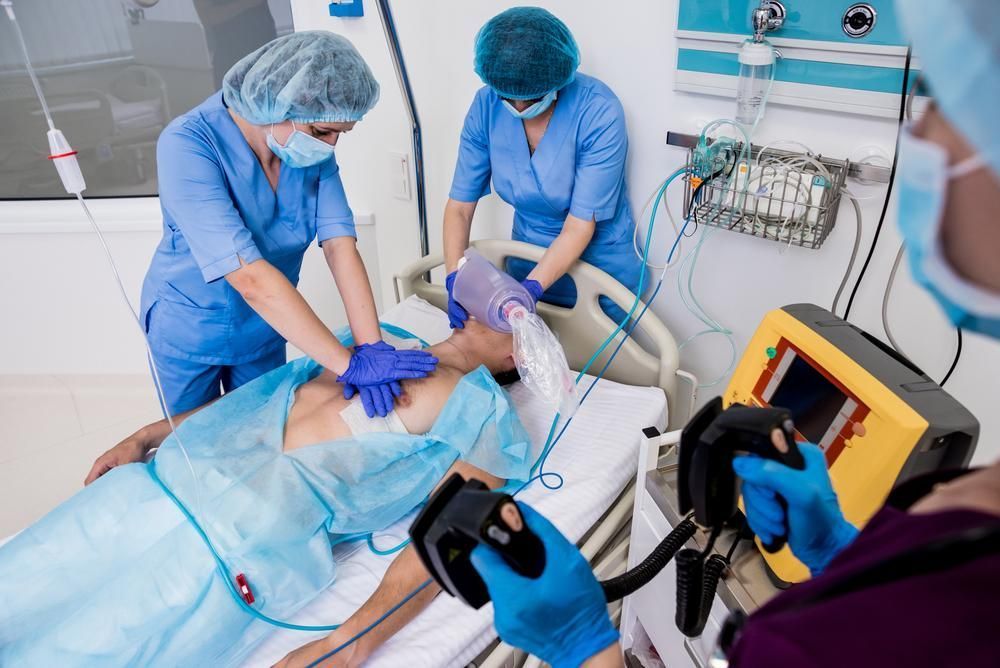Research shows that Healthcare Simulation can provide for clinical process improvement, when effectively managed. This research focuses on the simulation of medical situations and procedures, which is arguably needed and leads to improved patient outcomes. However, some medical simulationists ask, “How can we as the healthcare simulation team offer simulation to improve our processes as providers or capitalize on simulation’s resources to double-check a new procedure’s objectivity?” This HealthySimulation.com article will walk the medical simulation specialist through the process of how to utilize healthcare simulation for process improvement.
Ultimately, simulation is the concept of “practice as we play”, and healthcare simulation is no different. Medical simulation is utilized daily to enhance the skills of various disciplines; nursing, medicine, respiratory therapy, pharmacology, radiology, and any other healthcare profession. The multiple disciplines gain needed knowledge and can put that knowledge into action through simulation first and patient care second.
Healthcare simulation should not stop here but often does. What about the new nursing process set to go hospital-wide in a few weeks? What about the new policy that will affect the entire clinical team? These processes are composed of multiple processes in one. The focus of these complicated systems can be simplified through the healthcare simulation approach.
Typical processes of change generally follow a similar pattern:
- Identify a need to change
- Bring concern to the appropriate meeting
- Either map out a plan in said meeting or create a task force to brainstorm and ideate a plan of action.
- Assign a project team to develop a plan for action
- Provide education to the staff before launching
- Launch plan based on the many meetings had to discuss the efficacy of the plan
- Revise after launch and after gaps have been identified
- Re-evaluate and start again.
When done correctly, this plan provides the necessary actions needed to rectify the identified problem. However, without utilizing the healthcare simulation team to their full potential, the process takes longer, involves more people than necessary, and often does not fully meet the objective. Understanding the Law of Diffusion of Innovation and Design Thinking can add value.
The Law of Diffusion of Innovation states that the majority of people needed to make a change need to see the product or process in action and that more than the concept is needed. Known collectively as the majority, this group seeks change at less risk. When this group can see the process in action, they can understand and believe that the process works. By showcasing the product more than just the reasoning, buy-in is established.
Built into Design Thinking’s process is Quick to Prototype. A prototype is simply a tangible rough draft of an idea that serves as the potential solution to the problem. In this case, the healthcare simulation team possesses the tools and resources to create a process improvement prototype for the stakeholders to explore. The prototype model offers a quicker way to the solution while minimizing the time for unnecessary stakeholders’ involvement and allows for speedier process edits. Sometimes the modifications are made in real-time while simulating the process. In contrast, other changes take many attempts to identify a solution. Quick to prototype equates to crossing the necessary chasm within the Law of Diffusion of Innovation, more easily creating the buy-in needed to expedite the change.
Like any significant change, if utilizing the simulation for process improvement is not part of the healthcare simulation team’s organizational role, conversations need to occur that provide an understanding of the importance of the simulation team’s involvement. Remember, the quicker to change, the faster to implement adaptations that improve patient care and safety. Another critical point is that healthcare simulation specialists often offer the non bias input needed, mainly when a process includes two potentially divided or siloed units.
For example, a pandemic just entered the healthcare arena and is threatening the well-being of the staff. To provide adequate care to all patients entering the hospital, a change in the intubation process needs to occur. Assuming the simulation team has been brought into the project early, the healthcare simulation team members can identify key stakeholders. The key stakeholders would include those that intubate regularly in emergency or acute situations.
The first two groups of individuals identified are the Emergency Department staff and the ICU staff. Both groups offer incredible value and tend to divide themselves based on the differences of care each setting provides. The healthcare simulation team naturally becomes the common ground for each group and offers safety within the medical simulation modality. The healthcare simulation team offers mediation by getting all involved to focus on the quality process improvement instead of their opposition.
Once outlined, the hands-on project team now can put the plan into action and within the safety of a healthcare simulation. This safety allows the project team to identify in real time what works, what does not, and what changes need to be made before moving on. The process becomes a makeshift Rapid Cycle Deliberate Practice (RCDP) focusing on a new cohesive process instead of skills.
One process at a time soon becomes one extensive new system proven to meet the objectives. This system change has solved the necessary problems while showing the work, and this approach has done so in record time. Previous process improvements would take weeks or months to launch, which only then could be evaluated for gaps and errors. Now, with the assistance of the healthcare simulation team, this system improvement has been solved in hours or days while providing ongoing evaluations.
Process and system improvements in the healthcare industry continuously improve patient care and safety. However, by taking the approach of the healthcare simulation team leading the change, an added benefit is organically built into the process, which is team building capacity. Humans bond over real-life experiences. For example, two teams are coming together in one healthcare simulation experience. In this situation, the only thing to do is follow human behavior’s laws and bond over this experience. Two teams become a single team that effectively works together, often a top five strategic goal at most healthcare organizations, solved by capitalizing on the resources available within the healthcare simulation team.








